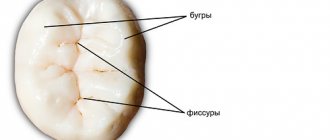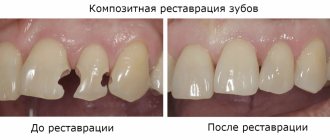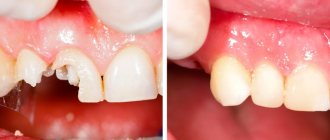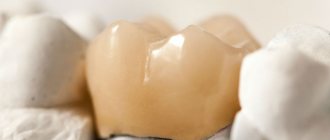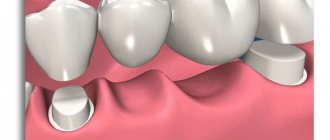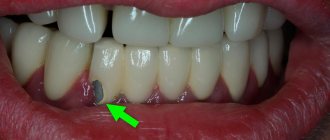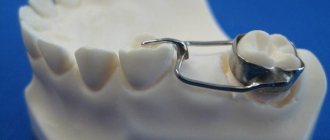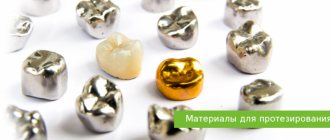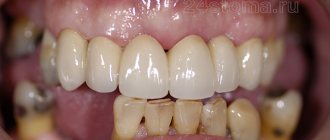Dental clinics of the German Implantology Center are modern centers of dental medicine at the European level. In our work, we use the latest technologies for treatment, implantation and dental prosthetics - low-traumatic, painless and guaranteeing long-term results.
Aesthetic dental defects cause physical and emotional discomfort in patients. Dental prosthetics, including using E-Max technology, at the German Implant Center can effectively solve this problem. Scrolling through the material below, you can familiarize yourself with our work.
About E-max material
E-max (glass ceramics) is a type of metal-free ceramics from which crowns, veneers, and bridges are made. The material with a glassy matrix consists of 70% lithium disilicate crystals. Dentists recommend glass ceramics for dental restoration because the material:
- has increased strength;
- imitates the natural color and transparency of enamel;
- allows you to accurately recreate the terrain;
- does not cause allergies.
E.Max ceramic crowns and veneers
Attending doctor
Strigin Vladimir Igorevich
Sign up
Where is the best place to place E-max crowns?
It's no secret that aesthetic operations such as the installation of E-max crowns should be carried out only in serious and trusted clinics. From the best specialists. They are professionals in their field, with thousands of successfully performed operations on aesthetic orthopedics, veneering and other aesthetic dental restorations behind them.
Why do we offer crown installations here, in our clinics?
All-Russian
The rating of private dental clinics in 2021 confirmed
the leadership
of the German Implantological clinics and the “Clinic over 3 years old”. The 100 best Russian clinics in each of these categories fought for the right to be the first, and we again became the best in Russia!
The awards took place on September 23, 2021 and September 22, 2020
within the framework of the largest dental exhibition in Russia -
DENTAL EXPO 2021.
In the category “Clinics up to 3 years of age” - the clinic of the Research Center in Ramenki:
In the category “Clinics over 3 years old” - the clinic of the Scientific Research Center on Kievskaya,
which has been successfully performing dental implantation for more than 9 years:
Manufacturing of all-ceramic E-max crowns
Dental laboratories receive glass ceramics in the form of blocks from which structures are made. Depending on the manufacturing method, crowns can be pressed or milled.
Pressed E.max PRESS
E-max PRESS is a type of glass ceramics that is processed by injection molding. After wax modeling, the workpiece is pressed at high temperature.
According to the classical E-max PRESS method, only a frame is formed, onto which dyes and porcelain are applied layer by layer. Advantages of the method: you can choose a shade to get an aesthetic result, low cost compared to all other E-max technologies. The strength of the finished products is up to 400 mPa, therefore they are installed exclusively on the front teeth, which are not subject to heavy chewing loads.
E-Max Press Multi are monolithic lithium disilicate blocks with a gradient color and varying degrees of transparency. This allows you to fully imitate tooth enamel - white and transparent at the cutting edge and on the sides, opaque with a yellow tint in the center of the crown and at the neck of the tooth. The structures consist entirely of pressed material and do not have porcelain lining, which increases the strength of the products up to 450 mPa. They can be installed on any part of the jaw. It is this material that we use for pressed structures in our Center for Private Dentistry “Doctor Levin”.
Milled E.max CAD
E-max CAD are glass-ceramic blocks designed for 3D milling using CAD/CAM technology on an automatic, program-controlled machine. The technology minimizes human participation in the manufacture of the structure. Finished products can withstand loads of up to 530 mPa, so they can be used both for a single restoration and for bridges in various parts of the dentition. The cost of products is more expensive than those made from pressed glass ceramics due to the use of expensive equipment, but the strength of such crowns compensates for the additional costs.
How are metal-free crowns made?
Ivoclar Vivadent produces metal-free crowns using two main methods - milling and pressing.
The 3D milling method involves the automated production of glass-ceramic blocks with subsequent processing on a special milling machine. Before manufacturing the structure, a scan of the patient’s oral cavity is performed. Based on the results, a 3D protection of the dentition is created and the optimal parameters for the future crown are determined using a computer program.
The pressing method involves taking impressions of the patient’s upper and lower jaw. Next, a plaster model is made, and the structure is modeled in wax. The product is sent to a special oven, where the crown is pressed under high temperatures and pressure. The next stage involves lining the product, painting and final firing.
All-ceramic crowns have a long service life
All-ceramic crowns are installed not only to restore damaged teeth, but to move to a new level of quality of life. If it is necessary to restore a front tooth or a group of chewing teeth affected by caries. In any clinic you will be offered to solve the problem in two hours with a composite restoration. It's fast and inexpensive. However, this is not an option for a thinking patient who does not want to adjust the restoration once a year for money. In these situations, an all-ceramic crown will cost more. But after treatment, you can forget about the problem forever; such crowns have a long service life.
Levin Dmitry Valerievich
Chief physician, Ph.D.
Installation steps
Metal-free structures are manufactured in up to 1 week. But the installation process may take 2-8 weeks. This period includes treatment of diseases of the oral cavity that can become an obstacle to prosthetics, wearing temporary structures to correct the bite.
Preparation
An X-ray examination is carried out. If necessary, treatment, removal of damaged units, and professional cleaning are prescribed. It is carried out to eliminate an infection that can become a source of infection of the tooth on which it is planned to install a crown.
Preparation
Before installing the structure, the teeth are ground down to the thickness of the future crown. Preparation using a microscope protects against unnecessary grinding, which was previously common. Only affected tissue is removed. Severely damaged teeth are depulped and strengthened with inlays. Making an inlay is not included in the cost of prosthetics; it is performed using impressions in the laboratory and takes additional time.
Preparation of impressions
Using impression material or an intraoral camera, impressions of both jaws are taken to objectively assess the bite.
Temporary prosthetics
Provisional crowns are fixed to the ground dental units using temporary cement. The structures protect sensitive teeth from infection, temperature changes, and restore functionality. They can be installed immediately (if made directly by an orthopedist) or after 1-2 days (if made in a laboratory by a dental technician).
Making a permanent crown
The impressions are sent to a dental laboratory, where a prosthesis is made by milling or pressing.
Fitting
The manufactured crown is first fixed with temporary cement for 2-3 weeks. During this time, the patient adapts to the artificial structure and evaluates comfort. If there are any shortcomings, the product is sent back to the dental laboratory for revision.
Permanent fixation
The product is tried on again. If the result is satisfactory, it is attached using permanent cement.
Control
After 3-7 days, the patient returns to the doctor for a follow-up examination.
If a large number of teeth are to be replaced, Wax-up and Mock-up technologies are used:
- Wax-up is a wax modeling of a future smile on a plaster model of the patient’s jaw. Allows you to visually evaluate and approve the new shape and size of teeth, and adjust crowns before the start of treatment.
- Mock-up is the transfer of modeled crowns to teeth in the form of temporary restorations. For complex work, several such sets are replaced, each one needs to be worn for 3-7 days to understand how comfortable it is and whether changes need to be made. During this time, the doctor will be able to make adjustments if necessary.
Advantages
- There is no metal showing through the gum. The gums around the metal crown shrink over time. As a result, the metal rim of the orthopedic structures becomes visible. In ceramic there is no metal and problems are excluded.
- Allergies and changes in taste are excluded. Materials are compatible with soft fabrics. The body does not perceive structures made of solid ceramics as something foreign. It interacts with soft tissue, does not cause allergies and promotes normal gum growth around the implant, as is the case with natural teeth. Due to the absence of metal in metal-free crowns, there is no sensitivity to too cold or hot food, and taste disturbances are excluded.
- Can't be felt in the mouth. Fixed with high precision. You will forget about the existence of the crown immediately after prosthetics.
- They look natural. Crowns made of solid ceramics imitate the structure of natural dental tissue - they have the same transparency and natural shade. Cannot be distinguished from natural teeth.
Flaws
- The cost of ceramics is higher than metal ceramics. But the price is justified by the benefits.
- It cannot be placed if the stump is dark in color. Can be seen through transparent material.
- Pressed ceramic crowns are not placed for bruxism. Excessive compression of the jaws will lead to breakage of the structure. Only milled structures are suitable.
Which is better - ceramic or metal-ceramic crowns?
In dentistry, metal-ceramics are non-removable dentures, the design of which includes a metal frame with a ceramic coating applied to it. Crowns and bridges are made from metal-ceramics.
All-ceramic artificial teeth are better than metal-ceramic ones because:
- allow you to extend the life of your “native” teeth (to install a glass-ceramic prosthesis, less tissue is removed);
- preserve the aesthetics of the smile (the mucous membrane in the area of contact with the material does not darken, as when in contact with metal);
- glass ceramics guarantee a strong marginal fit, which prevents receding and inflammation of the gums;
- when installing ceramics, the tooth is prepared above the gum level without damaging the soft tissues;
- the use of ceramics expands the possibilities of restoration (you can install veneers, ultra-veneers, for which metal-ceramics are not suitable).
When wearing metal-ceramic crowns, metal can be seen through the gum tissue in the form of grayish necks of teeth, which looks unaesthetic. Patients are concerned about a toxic or allergic reaction to the metal alloy for inlays or metal-ceramic crowns.
In 2000, we abandoned metal ceramics. At the Doctor Levin Center for Private Dentistry, only metal-free crowns are used for dental prosthetics, which are superior in reliability to metal-ceramic ones. This technology guarantees results in terms of aesthetics. It will not provoke an allergy to the medical alloy or the appearance of a “gray neck” on the tooth.
Life time
The service life of pressed ceramics exceeds 10 years, and milled ceramics reaches 25 years. If the patient follows the doctor’s recommendations, the time period increases. The lifespan of ceramic structures is influenced by a person’s lifestyle and habits.
Dr. Levin's Private Dentistry Center provides a 25-year guarantee on all cases using milled ceramics. We guarantee product integrity and color stability.
Types of metal-free crowns
In addition to lithium disilicate ceramics, we offer two more options for metal-free crowns, which are manufactured by milling using CAD/CAM technology. These are designs from:
- Zirconium dioxide is the most durable material (1200 MPa), quite aesthetic, and biocompatible. Used for single restorations and bridges of any length in the frontal and chewing areas.
- Aluminum oxide - slightly inferior in strength to zirconium dioxide, but more aesthetically pleasing. It is used for the same indications as zirconium dioxide. Manufactured using Procera® technology from NobelBiocare.
How are E-Max ceramic restorations created?
The prosthesis is based on a strong frame made of zirconium dioxide or fiberglass. It should be noted that both of these materials are not only durable, but also have a light shade, and therefore the color of the restoration is not distorted, as happens with metal ceramics. The base is covered on top with a ceramic layer of lithium disilicate. This layer is either tinted or a reduction technique is used, followed by individualization with ceramic masses, which gives the desired effect of depth and high aesthetics.
Orthopedic structures are created individually for each patient. First, the doctor takes impressions of the tooth (or its replacement implant), as well as of both jaws. The impressions are sent to a dental laboratory, where, based on the data obtained, a plaster model of the future crown is created. E-Max products are manufactured using two methods:
- Hot pressing with sequential application of ceramic layers;
- Three-dimensional modeling in CAD/CAM programs with milling of the product according to the resulting model. This is followed by staining or reduction with layer-by-layer application of ceramic mass to display all the anatomical nuances of the crown.
The clinics of the German Implantology Center use the second method, as it gives the most predictable result.
Each option is for its own situation
Sometimes you have to try on all three options to find out which one will look best for you. Optical characteristics depend on the transparency and color of the teeth. Often the patient wants a product made of zirconium dioxide, and after trying on and evaluating his order, he still trusts us to select the technology. Fittings are free, but take time. Therefore, I ask patients not to start work under time pressure; sometimes planning and design approval cannot be accelerated.
Levin Dmitry Valerievich
Chief physician, Ph.D.
The main advantages of Emax crowns
Universal crowns made of lithium disilicate crystals are successfully used in dental practice to restore anterior and chewing teeth. They ensure proper functionality of the dentition and improve the aesthetics of the smile.
Advantages of e max crowns:
1. Excellent biocompatibility, hypoallergenic.
2. Suitable for replacing all types of teeth.
3. High strength.
4. Impeccable aesthetic data.
5. The level of transparency and color of the crown can be adjusted to match the color of the patient’s natural teeth.
6. During operation, the original aesthetic data is retained for a long time. Plaque and tartar do not settle on the crown.
7. Simple and easy care of the orthopedic structure.
8. When installing, it does not require heavy grinding of teeth.
Metal-free crown e max
will last at least 10-15 years, fully maintaining its original qualities throughout its entire service life. Due to its high strength, the patient will not have to give up eating solid food for fear of cracks or chips in the orthopedic product. Crowns made of lithium disilicate and zirconium dioxide are not rejected by the body and do not cause allergic reactions.
Price
Our Center has created cases for metal-free structures, which include all stages of manufacturing.
| Type of crown | Price in rubles |
| E.max ceramic crown | 36000-48000 |
| Zirconium dioxide crown | 38000 |
| Ceramic crown on a zirconium dioxide frame | 42000-58000 |
For the first two options, prices are fixed, since this is our own ZirkonZahn® robotic production. The euro exchange rate affects the price, but it is no more than 500 rubles in both directions.
The price of one aluminum oxide crown using Procera® technology depends on both the ruble exchange rate and the number of DHL shipments to the plant in the USA.
I ask you to be understanding. The price list is adjusted weekly depending on the ruble exchange rate.
In non-standard situations, when individual design selection is required, additional costs may arise:
- Prototyping and manual production of preliminary design - 1,600 rub. for a unit.
- A temporary crown to correct the bite or overcome doubts about the future design - 6,000 rubles per unit.
These steps allow doubtful and anxious patients to agree on and try on the design before treatment begins.
I understand and approve of patients drawing up estimates for treatment in various clinics - these are normal inconveniences of the agony of conscious choice. You should understand the final cost of the turnkey product. As well as the preparatory stages.
Emax ceramic crown - natural beauty of a smile
The E-Max metal-free crown is a new generation prosthesis that has both high strength and ideal aesthetics.
E-Max ceramic crowns can be used to replace one or more missing teeth, as in the lower case performed by our wonderful orthopedist Andrey Nikolaevich Karneev:
You can read more about combined dental prosthetics using both zirconium crowns and E-max ceramics HERE.
In addition, this ceramic is excellent for making veneers: it literally transforms the front teeth, and due to its smaller thickness and increased strength, it does not require deep grinding of the enamel.
Contrary to popular belief, E-Max technology is not new, but it has gained real popularity in recent years, when patients began to place special demands on the natural appearance of veneers and crowns. Indeed, this advanced material replicates the color and structure of natural teeth, transmitting light and possessing a sufficient degree of transparency.
Orthopedics is not oral surgery
When carrying out work on maxillofacial surgery, no one is immune from surprises due to the complexity of the work and the inability to preliminarily estimate the cost “down to the penny”. In orthopedics, everything is known in advance. Be sure to clarify during your consultation at the clinic: who is the manufacturer of the workpiece for milling, what is the warranty for the product, and for what you will have to pay extra separately. In Russia it’s usually like this: Chinese procurement + “grey laboratory” = pleasantly low price. But the warranty is not more than 12 months.
Levin Dmitry Valerievich
Chief physician, Ph.D.
In this regard, the case pricing adopted in our Center will initially seem more expensive. But our system is fair and reliably protects patients from possible inconvenient situations when understanding the final costs of treatment with ideal consumables.
The clinic's warranty periods are documented with digital passports for the products.
Make an appointment with an orthopedic dentist
Features of care
In order for artificial teeth to last longer, they need to be cared for. The rules of care are as follows:
- Brush twice a day with a soft toothbrush and medium-abrasive toothpaste.
- Rinse with antiseptic solutions after meals.
- Use dental floss to remove food debris from between teeth. It is important not to pry the edge of the crown with it. This will lead to de-cementation, bacterial accumulation, gum inflammation or tooth decay.
- Avoid using any products with bleaching properties, including homemade ones.
- Avoid excessive loads. Avoid seeds, chewing gum, hard candies (grillage, toffee), and nuts in shell. You cannot open bottles, tear tape or threads with artificial or natural teeth.
- Avoid injury.
- Regularly undergo preventive examinations at the dentist.
Frequently asked questions from patients
What is a ceramic crown on a zirconium dioxide frame?
It is a durable two-layer construction. Inside it is a frame made of zirconium dioxide, made by milling. It is covered with layers of ceramics to give the structure a natural look.
What is better - a ceramic inlay or a dental crown?
Ceramic inlays are used when tooth decay is 40-50%. A crown is placed if the damage is more than 60%. The inlay is installed according to the principle of a light-curing filling, with the difference that the blank is made according to individual impressions in a dental laboratory. The restoration method is determined by the doctor.
How are veneers different from ceramic crowns?
Veneers are thin plates for covering the front surface of teeth, with a thickness of 0.3-0.6 mm. Ceramic veneers are placed to improve the color and shape of the front teeth, eliminate wide interdental spaces, and correct the angle of inclination. This is a way to improve the aesthetics of your smile without orthodontic intervention. In case of chips, it is advisable to install veneers if the tooth is more than 70% preserved. Indications for the installation of crowns include destruction of 60% or more. Used for dental restoration and implantation. In case of slight curvature of the dentition, chips and wide interdental spaces, we give the patient the right to choose the method of restoration - veneer or crown.
Can all-ceramic crowns be whitened?
Whitening agents are effective against natural enamel, the structure of which is porous. Ceramics have no pores. It is an integral solid material whose pigments cannot be changed. It is better to do bleaching before restoration so that the material of the orthopedic structure matches the color.
How long does it take to get used to ceramic crowns?
The structures are made according to individual casts, pre-fittings are carried out, and only then they are securely fixed. You will not have to get used to permanent structures; from the moment of installation you will not feel them, there will be no discomfort.
Where to install metal-free e max crowns?
The Moscow dental office offers an effective solution for restoring teeth using highly durable and aesthetic Emax dental crowns. It takes about 2 weeks to manufacture and install the orthopedic structure. At the first stage, an experienced dentist will conduct a competent diagnostic examination of the patient’s oral cavity, take pictures and prepare the abutment tooth.
Next, a scan of the oral cavity is performed to create a 3D protection of the dentition, followed by the manufacture of a crown using the emax technology. The ground tooth is covered with a temporary crown.
At the next appointment, a metal-free ceramic crown e max
is tried on and installed by fixation using a special dental composition.
If the tooth cannot be prepared and the doctor determines the need for its removal, the patient will be offered implantation followed by installation of a metal-free e max crown on the artificial root.
We have established affordable prices for dental treatment and prosthetics. The cost of a metal-free ceramic crown e max is 18,000 rubles. All patients who leave reviews on the site are guaranteed to receive a 3% discount on all dental services at the Aesthetics clinic. Don't miss the opportunity to save your personal budget on dental treatment and restoration!
